Engaged patients are better able to make informed decisions about their care options.
WHO
Healthcare is about helping people.
But sometimes people feel that the care isn’t accessible, while at other times, they think it is not convenient or affordable.
The result—they prefer not to take medical help.
Sadly, this trend continues.
For instance, The Epic Health Research Network (EHRN) data shows hospital admissions below expected levels in early 2021.
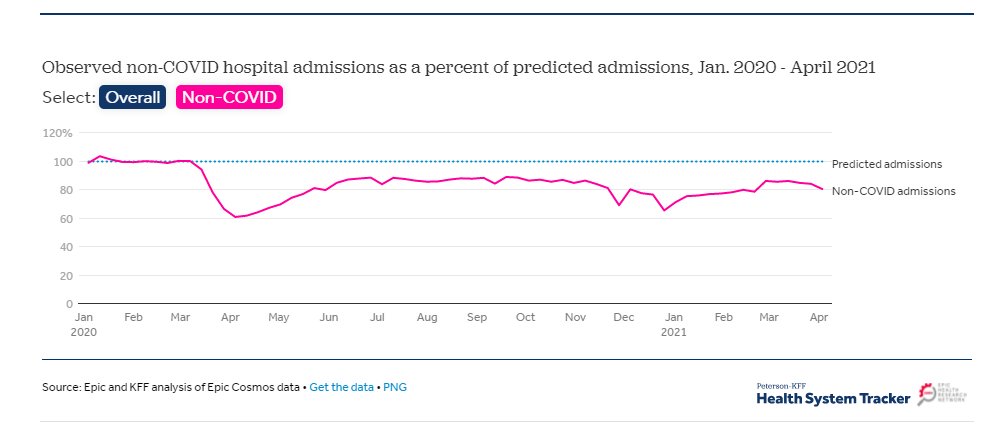
Similarly, OPD visits were lower than expected (even though the outpatient care rebounded by December 2020).
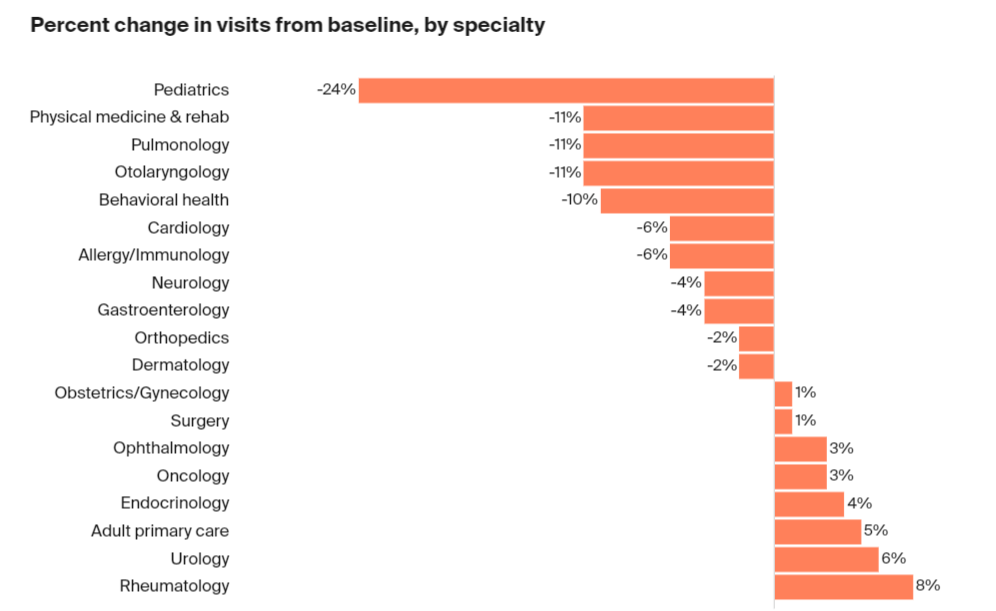
One of the reasons for the lesser number of people seeking healthcare services is the economic downturn because of the pandemic. Other reasons include dissatisfaction of some sort with the provider.
But the implications of missed care can be severe. It may lead to worsened outcomes or even premature death.
Amidst this, how can healthcare providers ensure care for those in need?
The answer is: through patient engagement.
What is patient engagement?
Patient engagement is a healthcare strategy where providers and patients work together to improve health outcomes. It involves educating patients about their conditions and encouraging them to participate in making decisions about their care.
Patients who actively communicate with their providers experience better health outcomes and incur lower costs.
According to a survey by healthaffairs.org, patients who were in contact with trained health coaches through telephone, email, reported the following benefits compared to patients receiving a usual level of support.
- 5.3% lower overall medical costs
- 9.9% fewer preference-sensitive surgeries
Thus, patient engagement is beneficial for both—patients and providers.
With this, providers can ensure timely treatment, and patients can enjoy better health.
But only if it was that easy.
Providers realize that their organization’s patient engagement activities and resources were insufficient.
Patient satisfaction scores also tell a similar story. 68% of patients aren’t satisfied with their interactions with providers.
So, what can be the best way to improve patient engagement?
We’ll discuss this shortly.
Before, a quick look at the challenges that prevent healthcare institutions from personally engaging with every patient.
Patient engagement challenges
Often, time and resources are the main constraints in engaging with patients.
In a NEJM Catalyst Insights Council survey, 63% of healthcare executives stated “time investment” as the biggest challenge in designing patient engagement into care delivery.
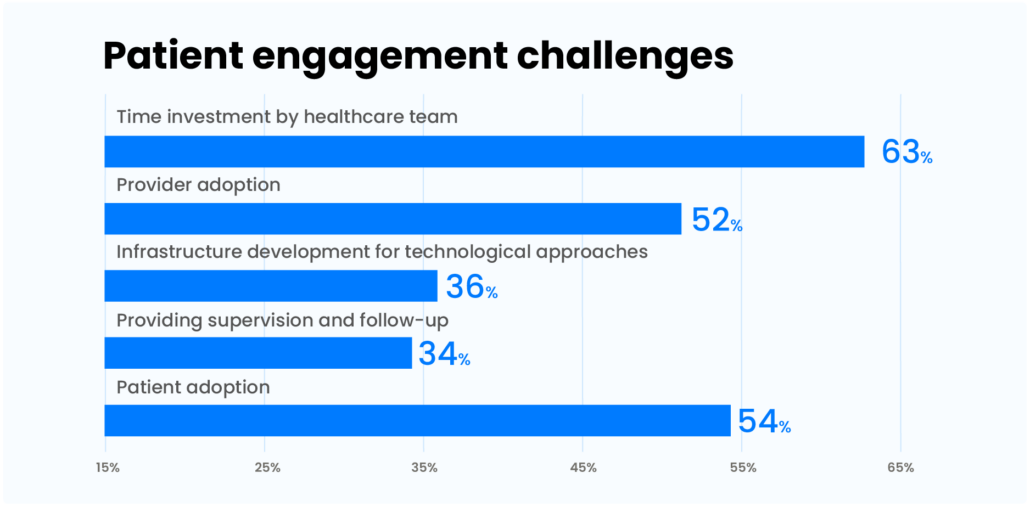
From a patient’s perspective, the hesitation in engaging with providers could be due to health literacy, busy lifestyle, or prior negative experience.
Good experience is crucial to encourage patients to engage with the provider.
However, that’s usually not the case.
Nearly 67% of patients report a negative experience with the provider. It includes inefficient visits, unhelpful medical advice, etc.
People who have a negative experience with the services they availed have either switched providers or are less likely to seek medical care the next time they need it.
But this doesn’t resolve their healthcare needs.
Healthcare institutions can take a step forward to engage with patients and help them improve their condition.
The next section equips you with ideas to plan your patient engagement strategy.
How to design your patient engagement program
Effective patient engagement programs can encourage people to focus on their health and seek timely help.
Following are the four crucial elements of a patient engagement strategy.
- Personalization
- Regular Follow-ups
- Patient Education
- Feedback
Let’s talk about these in detail.
1. Personalization
Personalization is an important aspect of patient engagement because patients need specialized care from their providers depending on their condition, the intensity of ailment, and their stage of recovery.
However, personalized care demands time and resources. And providers, when they have to handle several patients, often fall short of both. The good news is technology can help you deliver personalized care at scale.
Here are some examples of healthcare firms providing personalized communication to their patients.
Orlando Health uses data to communicate with their patients (new mothers). They can choose a track to focus on, such as caring for a new baby or family. They receive regular, personalized emails (based on the condition they registered at the hospital) to address questions they may have.
Talkspace, a New York-based online and mobile therapy company connects patients with therapists. Patients take an assessment and are matched with one of the licensed therapists in Talkspace’s network. They track and record the patient’s clinical progress, which is accessible to the patient as well.
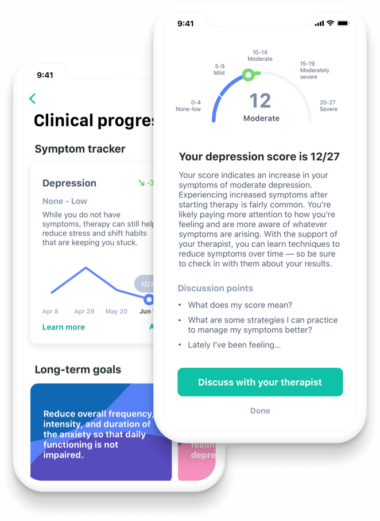
2. Regular Follow-ups
Follow-ups can help you build a good working relationship with patients.
You can follow-up with patients to:
- Schedule appointments
- Remind them about the scheduled appointment
- Share lab results
- Monitor health
- Confirm medicine regimens
- Reinforce knowledge and action plan
When it comes to personalized communication and follow-ups, healthcare CRM could be of great help. It allows you to send automated appointment reminders via text, email, or call.
3. Patient Education
Even though people are more informed today, nearly 36% of adults in the US have low health literacy. Lower health literacy causes medical errors, increased illness and disability, and loss of wages.
While there can be several reasons for lower health literacy, the major ones are:
- Complex healthcare system
- Reading ability, age, emotions of the patients
- Physician’s attitude and communication skills
- More self-care and self-education expected from patients
Nonetheless, patients expect emotional support from the care provider. They want their physicians to hear them out, show empathy, and explain their condition to them.
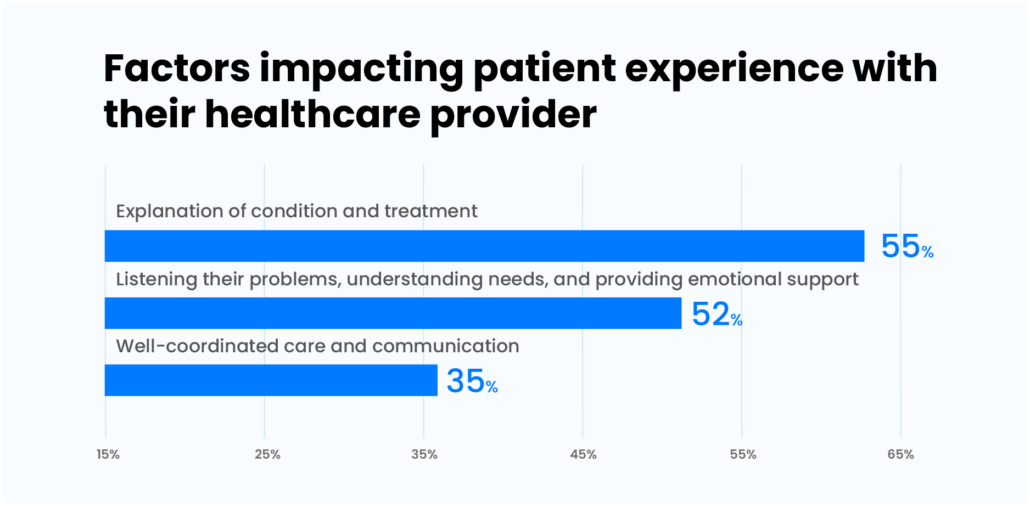
With a structured patient engagement strategy, you can bridge this gap with timely and compassionate communication with patients. Here’s how.
- When a patient inquires for an appointment, ask them about their symptoms, and suggest an appropriate physician.
- Sometimes patients don’t ask the right questions and are left dissatisfied with the interaction. One way to address this challenge is to send a list of common questions that a patient can ask their physicians. You can either give them a leaflet during their appointment or send them the questionnaire with the appointment reminder email. Here’s an example.
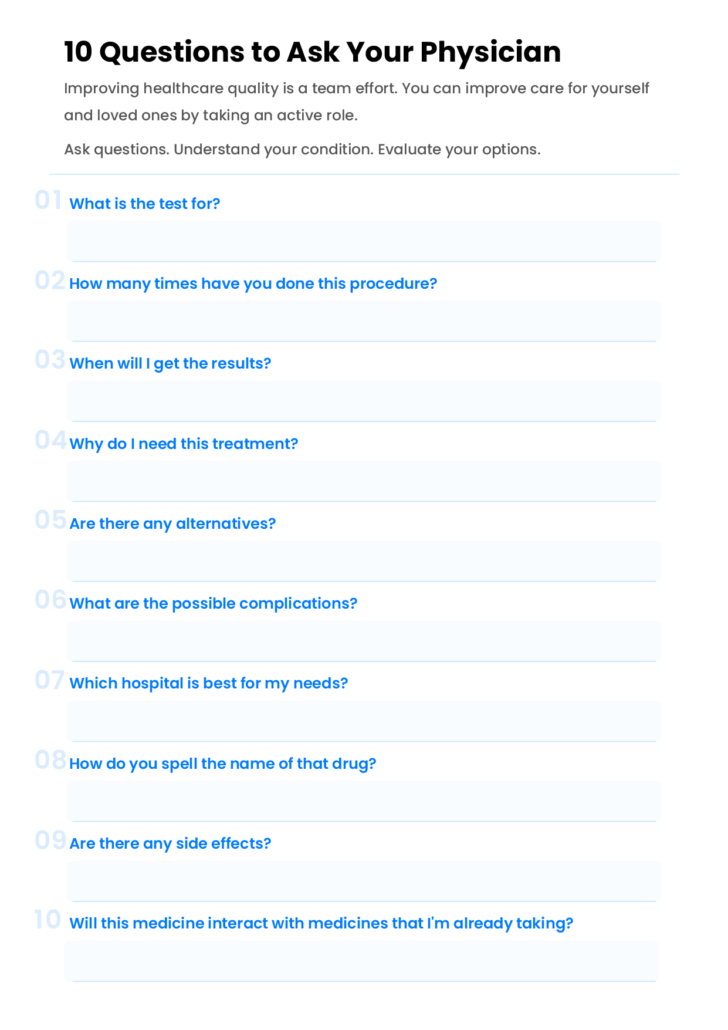
[You can also download this printable leaflet to share with your patients during their visit]
- Stay in touch with patients after the appointment. You can ask for feedback, check their wellbeing, and track their recovery. You can also send educational material to help them understand their condition and treatment. It will help build trust in your facility.
4. Feedback
Patient feedback is important to ensure the success of your patient engagement strategy.
Providers generally take a patient satisfaction survey after a successful appointment. But, the process to schedule an appointment is not always easy.
For instance, Avtex’s Omnichannel Healthcare Report 2021 reveals that 42% of patients find difficulty in connecting with the provider, which also had them stop communicating with the provider.

The point is, patient feedback is important not only about the appointment but also across all the interactions they have with your service.
Here are some resources to help you craft your feedback questionnaire.
The next important point is, how are you going to utilize the patient feedback in your process.
If you’re collecting feedback on a paper, you’ll need a data entry person to enter the record on the system and analyze them.
Alternatively, you can collect feedback on a tablet and record the response on the go. Healthcare CRM allows you to create e-forms for collecting feedback, tracking interactions, repeat visits, and more.
After you have collected the feedback, make sure you act on them. That is, analyze the responses and make changes in your processes from time to time.
Use technology in designing patient engagement into care delivery
Healthcare institutions need connected and data-driven patient-engagement technologies to deliver the care they envision. We’ve transitioned from brick-and-mortar institutions to hybrid healthcare systems.
The technologies that are specifically helpful are:
- EHR
- CRM
- Patient portals
- Marketing automation
- Call center automation solution
- Telehealth tools
While EHR/EMR systems are provider-facing technologies, CRM, portals, and marketing automation solutions are mostly customer-facing technologies. Let’s look at the role of each technology in improving patient engagement.
EMR/EHR technology
EHR or EMR system helps securely store patients’ health records and make them accessible across the healthcare ecosystem.
Both patients and referring doctors can gain access to health information in just a few clicks. Thus, saving time and money lost in repeat check-ups.
Healthcare CRM
Healthcare CRM software can help you capture inquiries, engage with patients, and reduce attrition. It tracks patient interactions and automates inquiry distribution, appointment reminders, feedback, and more.
Patient portal
Portals allow patients to securely access their health information, test reports, medical history and stay connected with the provider 24 X 7.
Marketing automation
With marketing automation, providers can engage with patients through multiple channels like email, SMS, WhatsApp, and social media easily.
Call-center solution
As mentioned above, it takes a lot of effort for patients to connect with their providers. Call-center solutions in healthcare can help resolve issues at the earliest possible. For example, it can free medical staff of handling queries like appointments, billing, insurance, etc.
Telehealth
Telehealth can expand patient access to care to literally anywhere. Apart from routine/casual consultations, it can help reduce panic by suggesting first-aid procedures during emergencies.
So, these are some of the popular technologies that help improve patient engagement.
The best part is you can integrate all these technologies to get a 360° view of customers and deliver consistent care.
For instance, the ability to access their health information digitally can increase patient and family engagement. It can be made possible through EHR and patient portals working together. Similarly, EMR/EHR integration with CRM can help track the patient journey—not only for one revenue cycle but throughout the time the patient needs care. Furthermore, healthcare CRM can integrate with IVR and cloud telephony solutions to track all the interactions.
When looking for technologies for patient engagement, consider:
- Accessibility and ease of use
- Data security, HIPAA compliance
- Cost-efficiency
- Integration capabilities
- Vendor reputation
In the next section, we’ll discuss how LeadSquared healthcare CRM helps you in your patient engagement plan.
How does LeadSquared Healthcare CRM helps in patient engagement?
LeadSquared provides a fully HIPAA compliant healthcare CRM solution with the patient portal and marketing automation to enable care at scale.
With this, you can automate workflows like appointment reminders, consultation feedback, follow-up routine, lab tests, and more.
LeadSquared allows you to build multiple patient journeys across the range of services you offer. That is, you can create different workflows for each department basis the procedure you follow.
Plus, it seamlessly integrates with EHR/EMR systems, cloud calling solutions, medical billing software, and more to create a unified view of patients.
Trusted by multispeciality like Manipal Hospitals and healthcare providers like Klarity, Form Health, New Hope Fertility, Two Chairs, Nova Vital, and more, LeadSquared is an end-to-end patient acquisition and management platform.
“LeadSquared’s APIs and connectors help us collect the data and integrate it with the system. The dashboards and reports enable us to work with this data and derive great insights from it. Both these features help streamline processes, save time and in turn boost team productivity.”
Kiran Ramakrishna, Assistant Manager, Manipal Hospitals
If you’re looking for a tool to improve patient acquisition, engagement, and management, LeadSquared is the way to go.
Book a quick demo and experience how it helps grow your practice.







